'Some Breakthroughs in the Decryption and Decipherment of a 16th-century Daemonological Treatise'
Transcript of an address given at the 13th DARPA Workshop on Cryptology and Steganography Research
Speaker: J.L.K. Spevans-Gilchrist, senior research fellow in Crypotological Daemonology, Adaptive Capabilities Office (ACO), Defense Advanced Research Projects Agency (DARPA), Ballston, Va.
Applied Strategic Cryptographical Inquiries, Vol 27, Issue 11, Fall 2024
Journal of the Institute for Defense Cryptology (ACO/DARPA)
From A Manifesto for Revolutionary Demonology
'My great and long desyre hath ever byn to be able to read these scripts of John Baptist Porta'
English occultist and alchemist John Dee
Overview
When the brilliant polymath Giambattista della Porta established his Academia Secretorum Naturae in Naples in 1562, little did he suspect that one of his cryptology students, disguised as a young gentleman down on his luck and promising to pay the enrolment fees when his uncle's inheritance was finally paid to him, was a novice friar in disguise. The brilliant adolescent was in fact an ecclesiastical fugitive, a lad on the run from Holy Mother Church, and it would not be for the last time in his harrowing life.
This young man, Giordano Bruno by name, a mere sixteen years old at the time, would go on to become one of the most controversial figures of the Renaissance, and would end his days burned alive by the Papal Inquisition at the Campo de’ Fiore in Rome in the year 1600.
His death would stand at the gateway of a new century of pestilence and agony, which perhaps he himself contributed in no small way into making such an apocalyptic epoch. But at this time, in the 1560s, all that embroilment in theological disputation and the smell of scorched human flesh was far in the future.
So what appeared to Maestro della Porta at his secretive sessions of the Secret Academy in the Due Porte, the mysterious Neapolitan caverns that were the site of their occult inquiries, was a callow youth with a prodigious memory and a penchant for polemic.
The next year Giambattista della Porta would publish De furtivis Literarum Notis (1563), ‘On Secret Writing’, considered to be perhaps the greatest cryptological treatise yet written. If the Steganographia (1499) of Johannes Trithemius was a revolutionary piece of cryptography, this work was a veritable encyclopaedia of possibilities within the dark arts of secret communications and espionage.
Let’s take the ingenious egg-trick, just as a single illustration of the ingenious invention of Della Porta in secret transmission techniques.
Every schoolchild knows that you can write a message on the shell of a hard-boiled egg. "I love you Mommy", for instance. It's quite possible that Della Porta's young disciple Giordano Bruno had been doing just that mere months before at school in his monastery. But that's on the outside of the egg, on the shell. What about on the inside, where nobody can see it?
Della Porta's innovation was to use a special ink to write the message on the eggshell as you would a message to your beloved mother who has abandoned you and left you bereft and crying in the sandpit, and then when the lettering has penetrated through the eggshell, boil it as any hard-boiled egg, so the outer message disappears while the inner message remains.
The recipient of the hard-boiled egg may then shell it at a convenient moment, read the message, and then eat it, in a sandwich perhaps with mayo or in a lovely salad yum yum. The special ink has no harmful effects.
The author of the ’Secret Writing’ was also the first to propose using music to convey secret messages. Music substitution ciphers are those which employ musical notation to encrypt a message, so that a musical script may be read as a text, or even the melody itself can be encoded to convey a hidden message. Della Porta pioneered this particular technique, along with a range of cipher disks at differing levels of complexity to allow the convenient encryption and decryption of forbidden knowledge.
It was even rumored, perhaps by the young Giordano Bruno himself, that there was a secret annex to this book of secret writing by the master of the Secret Academy which only his most trusted initiates were permitted to learn. This most esoteric of encipherment techniques would allow one to create messages in the very clouds, so that the weather itself would become the carrier of the text.
Then those besieged within a town under assault from forces of the Papal Inquistion, perhaps, or those who were locked up in their room for being a bad bad boy, could look out of the window and up at the sky, and read within the configuration of cumulonimbuses and stratocirruses, roiling stormclouds and wispy feathers of mist, that relief forces were on their way. A powerful tool indeed, then, and rightly concealed for only the most proven of acolytes.
From ‘Digital steganographic messaging using cloud delivery mechanisms’, Grabin et. al. (2023)
The Challenge
Well, all that's as may be, an entertaining enough anecdote in its way, but quite nebulous, if you'll pardon the pun. But what about the notorious Fourth Book of Della Porta's treatise?
In this book the author abandons his previous painstaking explanatory text on secret writing, and in the plainest of language gives instructions for the invocation of a powerful daemon, which the daemonologist may then induce to work on his behalf in order to slay mortal enemies, conjure up treasure from nothing, and manifest beautiful maidens so as to have carnal knowledge of them. Generations of thirsting occultists have naturally enough tried the incantations and sigils provided in this text in a thousand permutations and a million different experiments, but to no avail. It simply doesn't work. I know.
Mephistophiles according to Johann Faust (1532)
This is where my ACO/DARPA team comes in. Taking our inspiration from the pioneering work done by Jim Reeds over at AT&T labs on Trithemius’s Steganographia,1 we decided to look into whether this Book Four text on daemonology wasn't actually something else, an encrypted text, perhaps.
It's known that Giambattista della Porta was an admirer of Trithemius, and perhaps decided to perform a similar trick to that great master, that is to conceal a text inside another text, and moreover to make that covertext so manifestly dangerous and inflammatory that it would seem imposible that it could possibly be hiding anything else.
This is thought to be the reason why German heretic Trithemius put his own cryptotext inside a book of necromancy and daemonology: the inquisitors would be torturing him so hard to make him recant his witchcraft no Mommy please stop, that they would forget to ask him anything at all about secret ciphers.
Since this is a colloquium that includes many non-cryptographer laypeople from the Departments of Defense and Homeland Security, and the details of the decryption process are fully detailed in the more technical paper that accompanies this general presentation, please allow me to 'yadda yadda' over the many months that my team and I spent grinding through the various possible ciphers and cryptoschemes. Let's get to the point, the upshot, the nitty gritty, don't please don't it hurts.
Let's reveal our findings so far.
‘Steganographia’ (1499), a tricky text to decipher, requiring a specialized team and a supercomputer.
Findings
It turns out that the Maestro of the Secret Academy of Naples, Giambattista della Porta, had indeed concealed an encrypted text - which in cryptology we term a 'payload' - inside the daemonological book of his Secret Writings. With the help of the young heretical wunderkind Giordano Bruno, he had made it a potent enough payload to blow out more than a few brains on delivery. We are at present investigating whether this discovery constitutes a valid weapon of war. Let me elucidate:
The first thing we discovered, after a process of around three months, was that, just as in Trithemius' Steganographia, there is in fact a secret payload inside the covertext of the instructions for the invocation of daemons. What's shocking is that the decrypted plaintext here is a series on instructions for transforming the First Book of the De furtivis Literarum Notis, this very text itself, from a manual on secret writing into another incantation for invoking a daemon.
That is, the decrypted text on daemonology was in fact a cryptographic key for deciphering the text on cryptology and reinterpreting it as a text on daemonology. Mind-boggling enough, but there’s more. Could it be? You guessed it - could it be that this text, the now decrypted Book One, in turn is hiding another encrypted text?
This kind of embedded encryption, where one enciphered text hides a key for the decryption of itself in a further level of encipherment, a code-within-a-code, is generally assumed to require a fairly high level of processing, a PC at the very least, in order to accomplish. It seems of the face of it unlikely for two Renaissance scholars to achieve. But there is no theoretical limit to the layers of encryption that can be placed on a text.
So there we are. Book One, decrypted from its earlier decrypted form, related to a key for the decryption of Book Two, which dealt with a formula for the invocation of ‘the Daemon Mefisto’, which in turn can be decrypted to a series of keys for Book Three, which if decoded correctly becomes a text for commanding Lucifer Satanas himself to become the servant of the magus. Lord of Light thy power is great relieve me from my torment.
Already by this time quite a few of my staff members had become ill and requested medical leave, a cluster of work-related mental syndromes that was explained to the press as Havana Syndrome, as per the established protocol for daemonological casualties within the intelligence community. My colleague Dr Marianne Ziegler became fascinated by an ostrich one day at the Smithsonian Zoo, and retired from the service soon afterwards to set up an ostrich ranch in Arkendale. Hyram McCall, my trusted right hand and amanuensis, became fascinated by a toad observed on a fishing trip and sadly drowned trying to gather toad spawn in a brackish stagnant pond that very day.
Demon King Bael, master of fascination, from the Dictionnaire Infernale
It's very interesting this word fascinate, isn't it? Fascinating, if you'll forgive the redundancy. It derives from the Latin fascinum, a phallus amulet or talisman worn around the neck in Ancient Rome to protect one from possession or bewitching. We all of us in the profession of daemonological cryptology wear them, though the Jesuit order doesn't approve, and recommends instead a traditional crucifix. Makes for some interesting conversations for our female colleagues if dressed in open-necked ballgowns at a formal event, say. But it has to be admitted that they don't always work, these overhyped neck-dicks that we so desperately string around us.
This brings us to the meaning of 'fascinate' that concerns us now. From the phallus-talisman to protect against daemonic entrapment we get 'fascinare', the Latin verb that means ‘to enchant or bewitch’. Or ‘to hex’, in the old schoolyard vernacular we may have used back in the day. The schoolyard where so many everyday atrocities are committed to break the souls of sweet children no sir please sir don’t make me.
Many of us in our line of work find that suddenly we become fascinated by something, an animal perhaps, or a common object like a coin or a teacup. Then we will do nothing, desire nothing, except to contemplate that thing. An ostrich, say, and its deep alien and yet familiar black void eyes. A fly’s sudden jagged flightpath within a room that writes a hidden script. And so it was that most of my staff fell by the wayside.
By this time the team was reduced to myself and my young intern Jordan Brown, on secondment from MIT and a brilliant young scholar in his own right. For support we had the usual IT staff, who were not generally affected by the hazards of our trade, as well as our exorcism consultant, Father Ignatius Donnelly SJ.
Our Jesuit colleague, specially selected for the task, was nevertheless suffering some grievous ill effects from the work, but refused to take a leave of absence. Holy Father watch over us and protect us in this dark hour of our great trial... Uh, is... is I believe what he said. Lord of Light bring your power upon us this day. But I digress.
Roman fascinum or phallic amulet, possibly a bit bulky for personal use.
This one is notable for being a dick that itself has a dick.
Recommendations
PhD candidate Jordan N. Brown and I prepared a complete map of the various relationships between keys in the text and the cyphertexts to which they refer. Document A. We set out the complete plaintext instructions for the evocation of various daemonic entities – the weaponized payload, as you'll recall. Documents B to E. It only remains for us to determine the exact security applications to utilize these daemonological summonings.
By means of a 'surprise text' such as the lyrics to a song sung at a dinner gala, or an intimate nightclub-restaurant, these invocations might be activated to neutralize or even terminate a predetermined number of our adversaries. Further trials remain to be conducted on delivery systems within this context. Father Donnelly suggested that certain prayers to the faithful, psalms or sutras, might be utilized for certain faith-groups of our oppositional forces. It's an area with its own ethical and technical issues, but these might well be ironed out with enough time and resources.
Other possibilities include social media videos or text/audio messages, but in these cases there's a very serious issue of containment breach, where the effects could so easily spill over from the target individual or group to undesired collateral affectees, especially as the delivery system continues to deliver its payload long after its intended use. But the use of an app like Snapchat or similar, where the delivery media is erased after a short time, might well be the answer in such cases.
Research in these areas was progressing well even despite the lack of personnel available, until an unfortunate incident some two weeks ago. My young colleague Jordan Brown had become overly focussed on a particular passage in the 'Boss Text', as we called the section in Book Three that invoked Satan himself. Mommy come back to me and let me go Lord of Light deliver us.
He became convinced that the Book Three Lucifer Invocation concealed a further payload text which was in fact a cipher to the unravelling of the very fabric of the universe. Moreover young Jordan came to believe that it was his destiny to decipher this code and, as he explained it to me in a confidential talk one evening, "to put the world of men out of its misery, and end the charnelhouse slaughter of the innocents that we commit daily, once and for all."
Now we are all men and women of science here, not given to such metaphysical outrages. In the field of offensive and defensive daemonology we go by the working assumption that daemons and spirits are not existing supernatural beings, and that the forces at play - that they empirically have been shown to unleash on human and even animal subjects - are in fact a sort of as-yet unknown psychoactive coding that triggers certain destabilizing effects in the mammalian brain.
Going by this hypothesis, the claim that some invocation or spell in the della Porta text could actually bring about the physical end of the cosmos was clearly evidence of young Jordan Brown's overwrought delusion, brought about either by overwork or by some strange fascination promoted by the text he was working on.
So it seems to logical folk like us. But to one newly fascinated by apocalyptic metaphysics and hermetic eschatology, whose mind was already clouded by guilt over the kind of work in which we engage on behalf of the national security interest, the result could be catastrophic. And to one like Father Donnelly - a man of God and faith despite his training in the finest university departments of psychology and philosophy in the world - Brown's apocalyptic fascination with bringing about the end of the cosmos by occult necromancy could seem like the gravest and most dangerous heresy imaginable.
Thus it came about that on February 17th this year, at around 7.45 AM, Jordan Bruno, our 23-year-old postgraduate intern and beloved young colleague, broke in to our DARPA facility by using a stolen ID card. I had revoked his ID just the week before when I ordered him to take an enforced period of rest and recovery. He made his way to our cryptology lab, security personnel in pursuit, but confused as to which way he had gone.
He easily accessed the documents that were encrypted on my laptop, which I had somewhat negligently left in the lab along with copies of all our documents. The laptop also contained the documents with his own latest attempts to crack the final supposed cipher, the one that would allow him to read the incantation that would unravel the structure of spacetime itself and bring about the blessed relief of cosmological annihilation that his fevered imagination now sought.
I was running late in traffic that morning, but Father Ignatius Donnelly SJ arrived early at the lab to find young Jordan pecking at the laptop's keyboard. What happened next is not exactly clear, as the security cameras inside our labs were not clearly focused on this event. But it seems that Father Donnelly demanded that Brown step away from the laptop and was refused. He then fetched his own stock of Irish whiskey, some lighter fluid from his desk drawer (he was an occasional smoker) and a container of inflammable cleaning product from the storelocker just outside the lab.
Chanting incantations from the Catholic Rite of Exorcism, he proceeded to splash these liquids all over Jordan Brown's hunched figure as the young man worked fascinated and quite unfazed on the key to unbind our universal fabric. Just as Brown was starting to intone the decrypted words of the Bosstext Invocation, Father Donnelly cast his lighted zippo at him.
Jordan Bruno caught fire instantly, and was consumed in a blaze that had him screaming and running blindly all round the lab. At this point, with alarms going off and the sprinkler system activating, though too late to save young Jordan, the security guards came into the lab.
They were naturally quite shocked and so pulled their weapons, calling for both the burning man and the chanting priest to kneel on the ground. But of course the burning man could not hear them over his own screams, Lucifer consume me also in your cleansing fire. And Father Donnelly seemed not to pay any attention to them, pronouncing loudly the formula of the exorcism rite and waving his hands around quite wildly and uncanonically.
So they shot him. I'm not defending this most regrettable action, merely stating that it is quite understandable given these very difficult circumstances.
A full inquiry has been ordered, and all armed security staff will have to undergo additional firearms training in the near future, budget and schedule permitting. Father Donnelly bled out there on the floor of the lab, as young Jordan blazed up his soul under the fire sprinklers, a sacrifice made in abundant rain for the Lord of Light.
Autopsy revealed that Brown had a shrunken heart and was unlikely to have lived much longer anyway.
Closing remarks
It can be objectively concluded that our research project has so far been a guarded success. Though there have been some admittedly significant setbacks - with the unfortunate and unforeseeable loss of a handful of research staff to psychological incapacity, arson and gunshot wounds - great strides have been made in the application of cryptologically-delivered daemonological techniques within the field of strategic covert initiatives.
Exciting new advances have been made in the possibility for targeted direct action against adversarial elements, action which is potentially both non-lethal and unattributable, if handled appropriately and discreetly. I feel sure that, with continued further funding and an injection of fresh qualified personnel into the project, great advances can be achieved within the coming fiscal year.
I've been very excited to share our work with you here this morning.
Thank you very much for your attention.
I will now open the floor to any questions you may have.





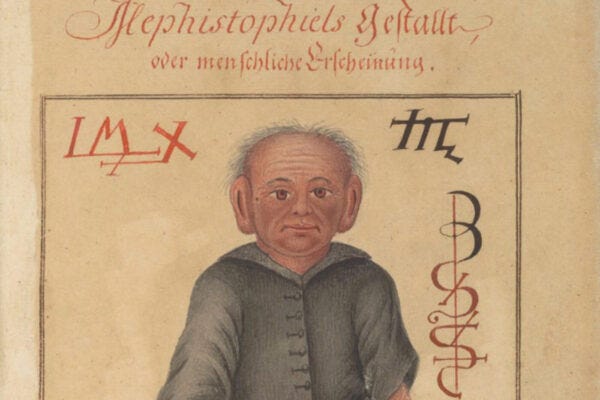
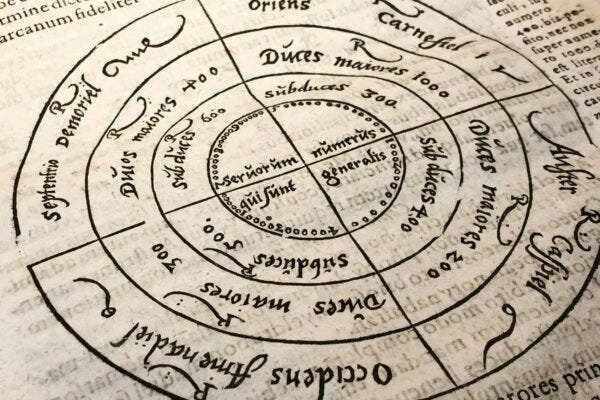
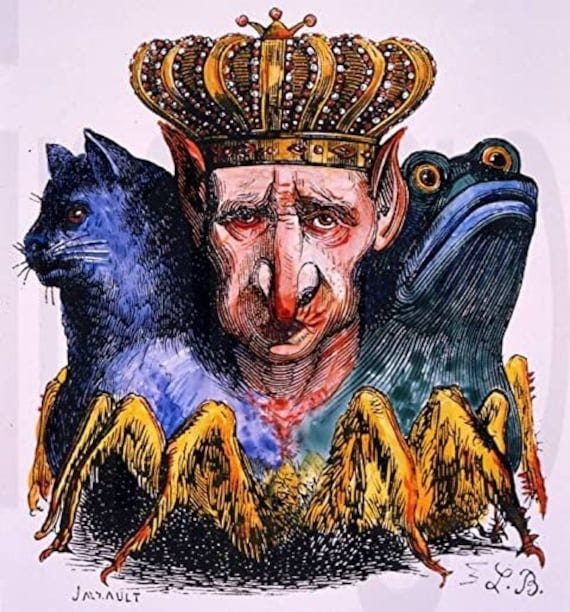

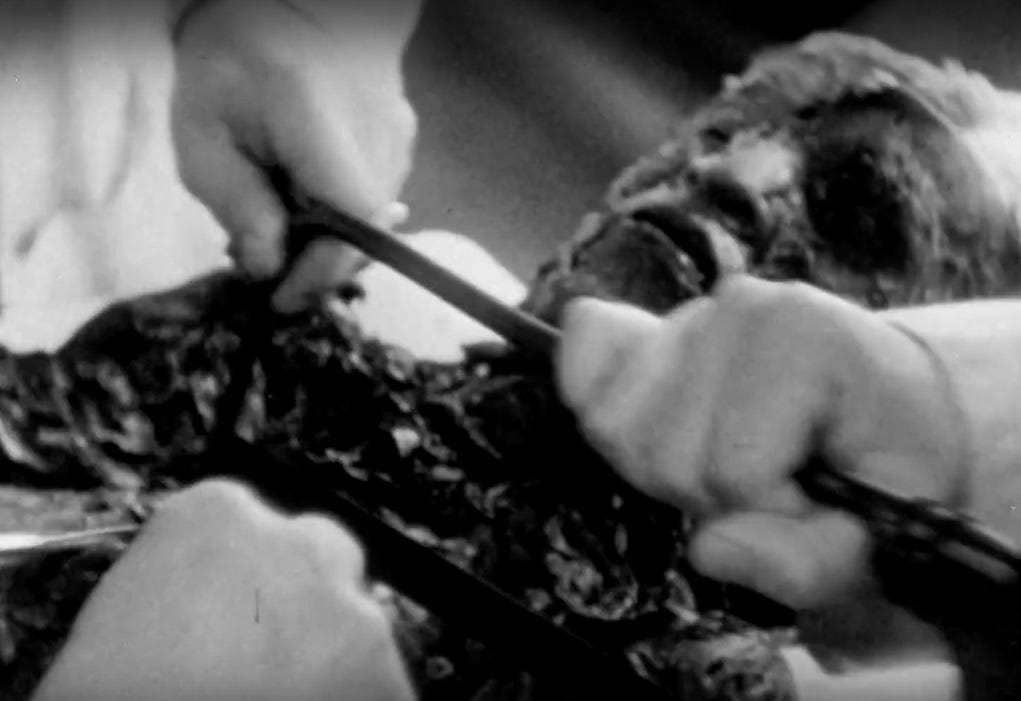
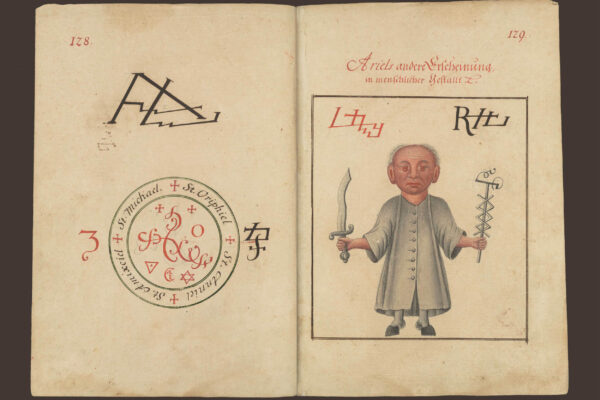
And I thought my decoder ring was cool. I have questions. Sure. But they are encrypted in a spiralling lucid dream state that I am presently activating. Be with you in a minute.
I look forward to future papers.